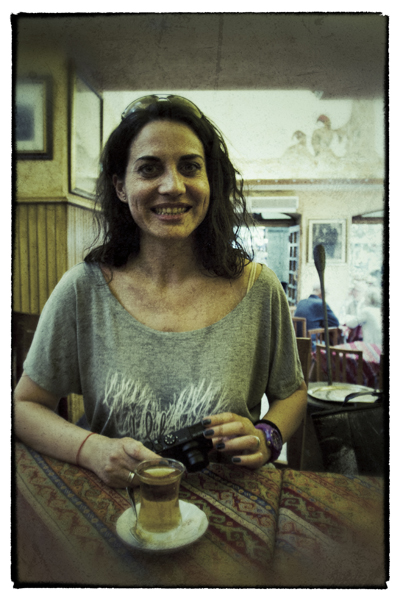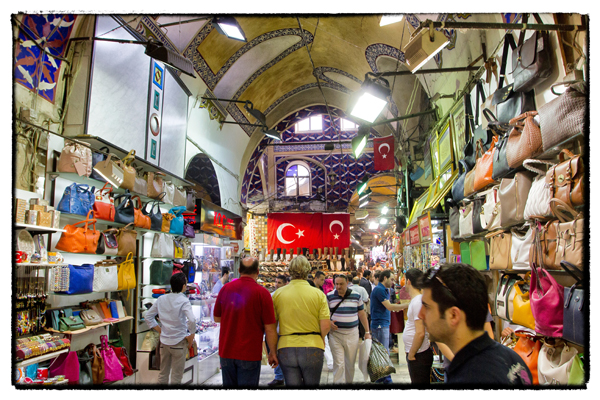Not all of us had tea at Sark Kahvesi, the coffee house in Istanbul’s Grand Bazaar. Delia, the other Romanian, ordered Turkish coffee, or kahve. Not because she particularly wanted it (muddy and bitter, it’s definitely an acquired taste) but because Sidar had promised to read her fortune if she did.
Coffee fortune tellers are as common as children in Turkey. Nobody takes it too seriously; it’s just something to do while you’re sitting with friends. But there’s a certain ritualistic way you tell someone’s fortune in Turkey, as Sidar explained to me.
When you’ve finished your coffee, you swirl the sludge around a bit and then quickly turn the cup upside down on the saucer. Wet your finger with your tongue and place it on the bottom of the cup and make a wish. Now wait several minutes for the grounds to cool and settle.
When the cup is cool, the person doing the reading should turn the cup over (it is said to be bad luck to read your own fortune), examining the grounds in the cup. Starting from the cup’s handle, imagine a horizontal line and a vertical line so you have four different imaginary areas in the cup from which to read the signs. Then it’s sort of like seeing specific images in clouds—a dog, a bird, a river, an angel.
Sidar says that there are some general interpretations of the symbols but each fortune teller has his own little variation. For instance, a dog could mean you have good, reliable friends. Or it could mean your partner is faithful. Or that one of your friends needs help. It all depends on who is doing the reading.
A bird might mean that you’re about to get news (good or bad). Or it could be an omen of something that is about to happen to you (good or bad).
Anyway, after the coffee fortune teller finishes reading your signs in the coffee cup, they can, for extra illumination, examine the grounds on the saucer. Once you’ve gleaned all you can, dip your finger in the grounds and suck it to seal your fate!
Here’s a very short video of Sidar telling Delia her fortune.






Recent Comments